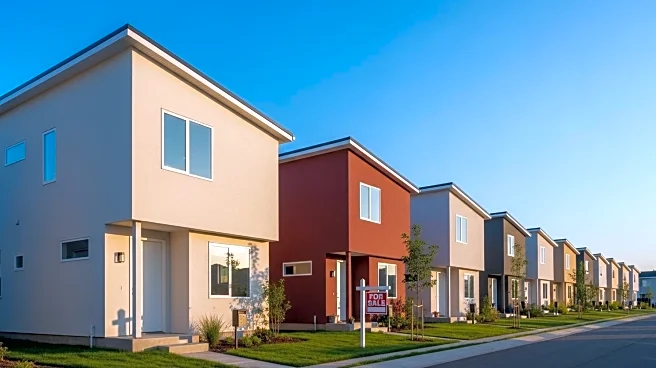What's Happening?
Newly built homes in the United States have decreased in size, reaching the smallest average in two decades. This trend is driven by higher mortgage rates and reduced affordability, according to recent analyses. The average size of a new single-family home sold in 2024 was 2,404 square feet, marking an 11% reduction from a decade ago. The median sales price of a new home was $403,800 in July, while 30-year mortgage rates have risen from 2.65% in early 2021 to the mid-6% range, impacting household affordability. Realtor.com reports that only 28% of homes on the market in August were affordable to households earning the U.S. median income, down from 30% earlier this year. This situation has led to a decline in homebuying activity, with total home sales last year falling to their lowest level since 1995.
Why It's Important?
The shrinking size of homes and rising mortgage rates have significant implications for the U.S. housing market and economy. As affordability decreases, many potential buyers are forced to adjust their expectations, either by seeking smaller homes, moving to less expensive areas, or postponing homeownership. This shift affects builders, who are increasingly focusing on smaller, budget-friendly homes to meet changing consumer demands. The ongoing strain on the housing market could lead to broader economic impacts, including reduced consumer spending and slower economic growth. Additionally, housing-linked investors are closely monitoring builders and suppliers for signs of demand and margin changes, which could influence investment strategies and market stability.
What's Next?
Economists suggest that relief may come if mortgage rates decrease, although any improvement is expected to be gradual. The housing market's outlook largely depends on future interest rate trends, which will influence affordability and buyer activity. Stakeholders, including builders, investors, and policymakers, will need to adapt to these evolving conditions to mitigate potential negative impacts on the housing sector and broader economy.
Beyond the Headlines
The current housing market dynamics may lead to long-term shifts in consumer behavior and urban development. As buyers opt for smaller homes or relocate to more affordable areas, there could be changes in community structures and local economies. Additionally, the trend towards smaller homes may influence architectural and design practices, prioritizing efficient use of space and sustainable building methods.













